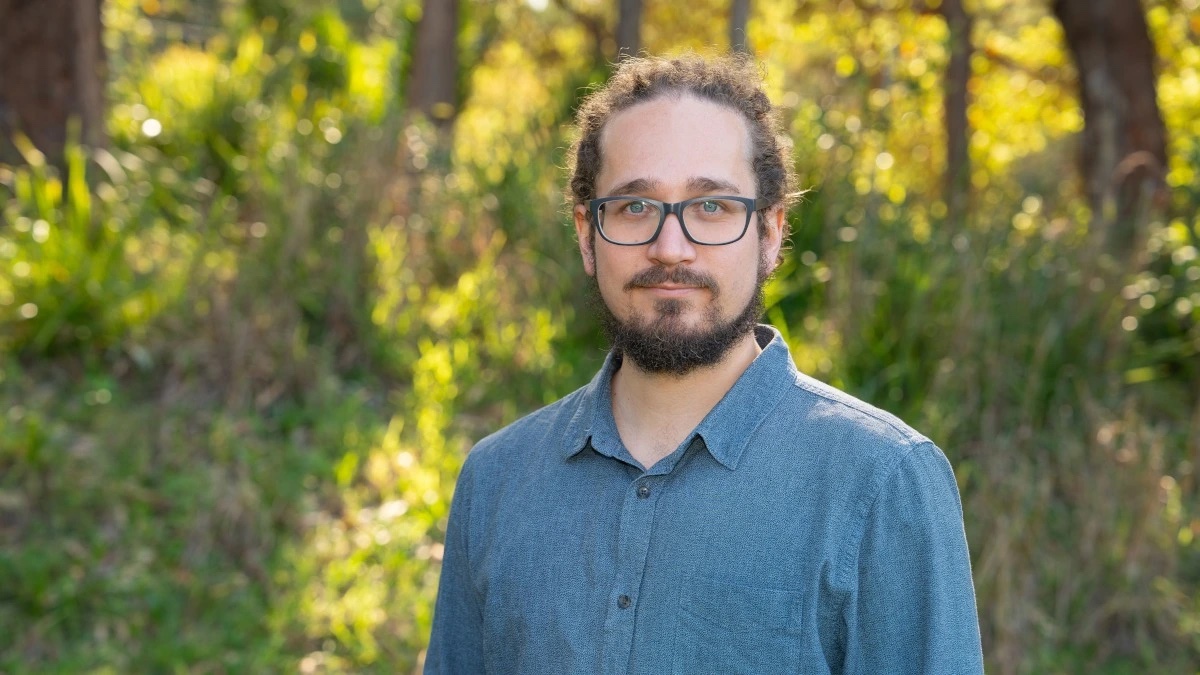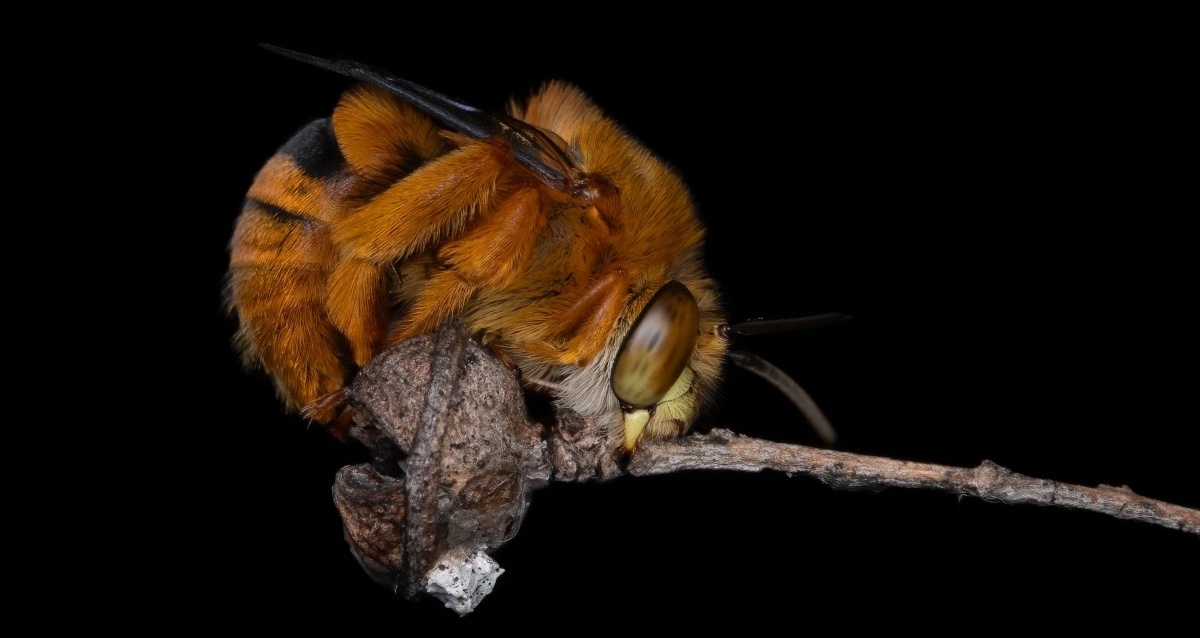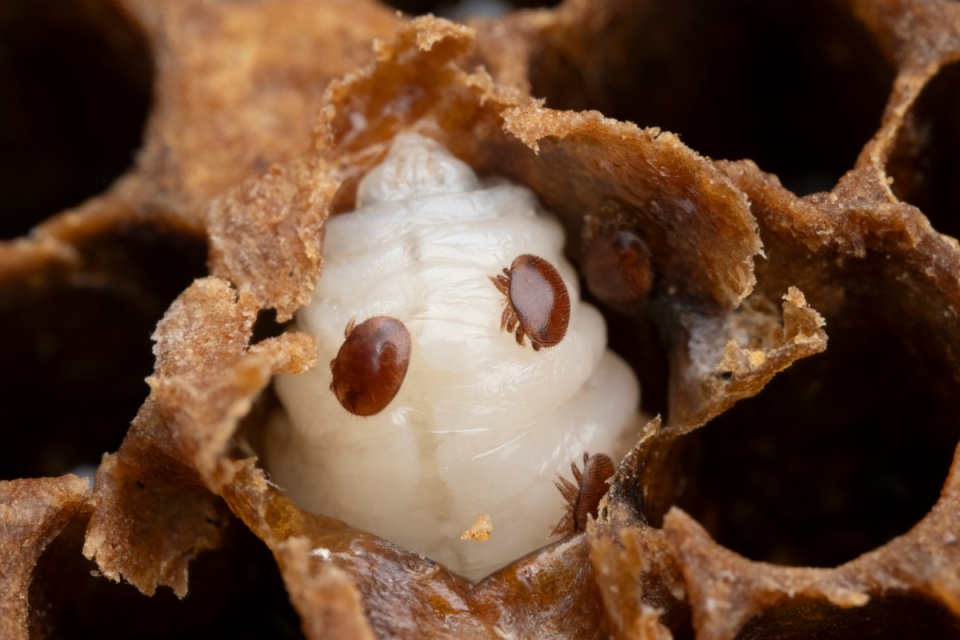To celebrate World Bee Day on 20 May, we feature Dr Théotime Colin, from the School of Natural Sciences, in a special issue of Ten Questions With - shining a spotlight on the incredible bee research happening at Macquarie.
20 May 2025
Ten Questions with : Macquarie University honeybee scientist Dr Theotime Colin
Dr Théotime Colin, from the School of Natural Sciences, is a honeybee scientist interested in understanding how colonies function and how their health can be improved. He started beekeeping in France at age 16 and followed his passion for social insects, working on ant biology for many years before completing a PhD at Macquarie University.
An Early Career Industry Fellowships grant from the ARC and a philanthropy grant from the Ian and Shirley Norman Foundation saw Dr Colin develop non-chemical controls for the varroa mite, a devastating parasite of the honeybee. In his spare time, he likes to go camping to take bug pictures.

1) Something you would like other people to know about
I often look for volunteers and interns to help with experiments. We teach them the basics of beekeeping. I ask other science lecturers who have motivated students interested in learning beekeeping or doing bee science, to send them my way.
2) A person you admire at Macquarie
The team that manages the Fauna Park works relentlessly to accommodate a wide range of research on plants and animals. Few campuses in the world are lucky enough to have a research area like the Fauna Park. This greatly facilitates my research on bees.
3) The coolest bit of equipment you use in your work
I adapted a radio-frequency system so that we could read electronic chips glued to the backs of honeybees. This allows us to track when they enter or exit the hive. The system helps us collect critical data on how environmental stressors affect individual honeybees.
4) Something people usually ask when they find out what you do for a living
Do I get stung a lot? Yes, a few times a week. And yes, it still hurts.
5) A favourite photo from your camera roll
[The following images are reproduced with permission, credit Dr Theotime Colin)

Amegilla bombiformis, the teddy bear bee, is a uniquely coloured bee native to Australia. Their large eyes and powerful wing muscles allow them to fly extremely fast. They are also able to vibrate flowers to collect more pollen, which they capture with their incredibly fluffy body. Native plant species such as dianella lilies hold pollen in long, tube-shaped anthers that only let the most efficient pollinators, such as teddy bear bees, collect pollen.
After a day of zooming from flower to flower and vibrating anthers, teddy bear bees gather on tree branches. They grab twigs with their mandibles, which stay shut at rest.

Stingless bees Tetragonula carbonaria are native to Australia. They are eusocial like honeybees, meaning they have a queen that is the only individual to lay eggs, and workers who care for the colony. They are, however, quite different from honeybees and build their brood comb in horizontal spirals.
Honeybee research has never been more critical in Australia. Varroa mite - a small but devastating mite parasite of the honeybee is spreading through Australia, causing beekeeper losses and piling stress on the production of bee-pollinated crops.
6) A website or app you cannot live without
iNaturalist is a brilliant app using AI to identify insects and plants.
7) Where you live - and what you like about living there
I have lived in Sydney’s inner west for a few years now. Even in the heart of the city, there are many fascinating social insect species. My favourite local bee species are blue banded bees (Amegilla) who visit the basil flowers in my back yard, and occasionally I find gremlin ants (Colobostruma) in Sydney Park.
8) Something you are trying to do differently in 2025
Eating more native foods. Australia has a rich diversity of grains, fruit and vegetables. These plants grow better here than the common veggies and fruit we’ve imported from overseas. They often require less water and pesticides, too.
9) I am happiest when…
I am in the bush taking bug pictures with my friends.
10) The theme for World Bee Day is ‘Bee inspired by nature to nourish us all’. Why are bees important for the environment?
Native bees, along with other insects, pollinate most of the flowering plants we see in the bush. Many species struggle due to urbanisation, pesticide use, fires and climate change. Honeybees, although they are not native, are responsible for the pollination of most food crops. They are also under significant stress from current agricultural practices, invasive pests and disease.
- with Sharon Keenan
More buzz for World Bee Day :
What can readers do to protect our bees?
- Do not use any pesticides in the garden. Even products labelled ‘eco-friendly’ can harm pollinators.
- Plant native flowering plants.
- Do not mow lawns too early in spring; allow flowers a chance to bloom.
- Provide bees with flowering herbs and veggies in the garden.
- On campus, staff and students can volunteer for bush regeneration, planting trees and flowering plants will help keep our campus green and welcoming for pollinators.
Discover the incredible bee-research (beesearch!) happening at Macquarie
- Professor Andrew Barron's March 2024 study found metallic pollutants significantly reduced honey bee learning capability and brain structures at a historic French gold mine.
- Associate Professor Ajay Narendra's research demonstrated that glyphosate herbicide impairs bee learning by disrupting gut microbiomes and developed probiotic supplements to counteract these effects.
- Dr Rachael Dudaniec studied invasive bumblebees across Tasmania, examining nutrition and gut microbiome interactions to assess pollinator health before potential Varroa mite arrival in Australia.
- Dr Théotime Colin developed an improved radio frequency identification system that collects high-quality data on honey bee foraging by separating bee traffic into distinct tunnels.
- Dr Carmen Dasilva's ongoing research through June 2027 examines climate warming's sublethal effects on native bee ecology and pollinator resilience to environmental change.
- Associate Professor Fleur Ponton developed innovative probiotic treatments for honey bee diseases that were tested in laboratory conditions and assessed for effects on foraging behaviour.